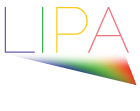LIPA and Lasers at the EDCF Annual Meeting
This year’s annual European Digital Cinema Forum (EDCF) Meeting -– like so many 2020 annual get togethers, was virtual this year. And LIPA and Lasers were on the program. LIPA’s Chairman, Dr. Goran Stojmenovik, Barco’s Sr. Product Manager for Laser Projection, updated the audience on the latest applicable IEC regulations for EU deployments of High Brightness (HB) Laser Illuminated Projectors (aka: LIPs). Though largely focused on LIPs for Digital Cinema, Dr. Stojmenovik explained that nowadays, all LIPs are subject to IEC regulations governing audience and employee exposure. Furthermore, since the IEC has moved to regulatory criteria based on what radiance comes out of the lens and not the power of the Laser Light Source (LLS), regulations apply to Lamp-Based projectors as well. If they have high radiance and fall into “Risk Group 3”, both Laser and Lamp illuminated projectors are subject to the same safety regulations.
Dr. Stojmenovik focused on Risk Group 3 (RG3) projectors as they are the brightest and thus have the most complex and stringent regulations, use conditions, training requirements and documentation needed – for manufacturers, distributors/dealers, owners and operators. He explained that eye hazard is a function of radiance, that is, the projected optical Power (watts), cross-sectional area of the projector’s illumination “pupil” and the beam divergence (throw-ratio) of the lens. That is to say, not lumens, which is related to the eye’s sensitivity to different colors. This is why the hazard level is the same for both laser and lamp illuminated projectors of equivalent radiance, spot size and beam divergence (solid angle). This has been the contention and basis of LIPA’s successful regulatory rationalization efforts since it was founded in 2011.
After explaining the scientific rationale for the new regulations, Dr. Stojmenovik described the impact of these regulations on both Cinema and non-cinema applications. The key figures of merit are the Hazard Distance (HD) – the point at which the light intensity drops to a non-hazardous level; Separation Height (SH) the distance above the floor (within the HD) that the bottom of the beam must be for patrons to be able to sit under it. In Europe, this distance is 2 meters; in the US, 2.5 meters. These “guard bands” around the lens are calculated based on radiance and lens throw (divergence) and determine if a Restricted Zone (RZ) is required. For more details, access the full presentation here.

